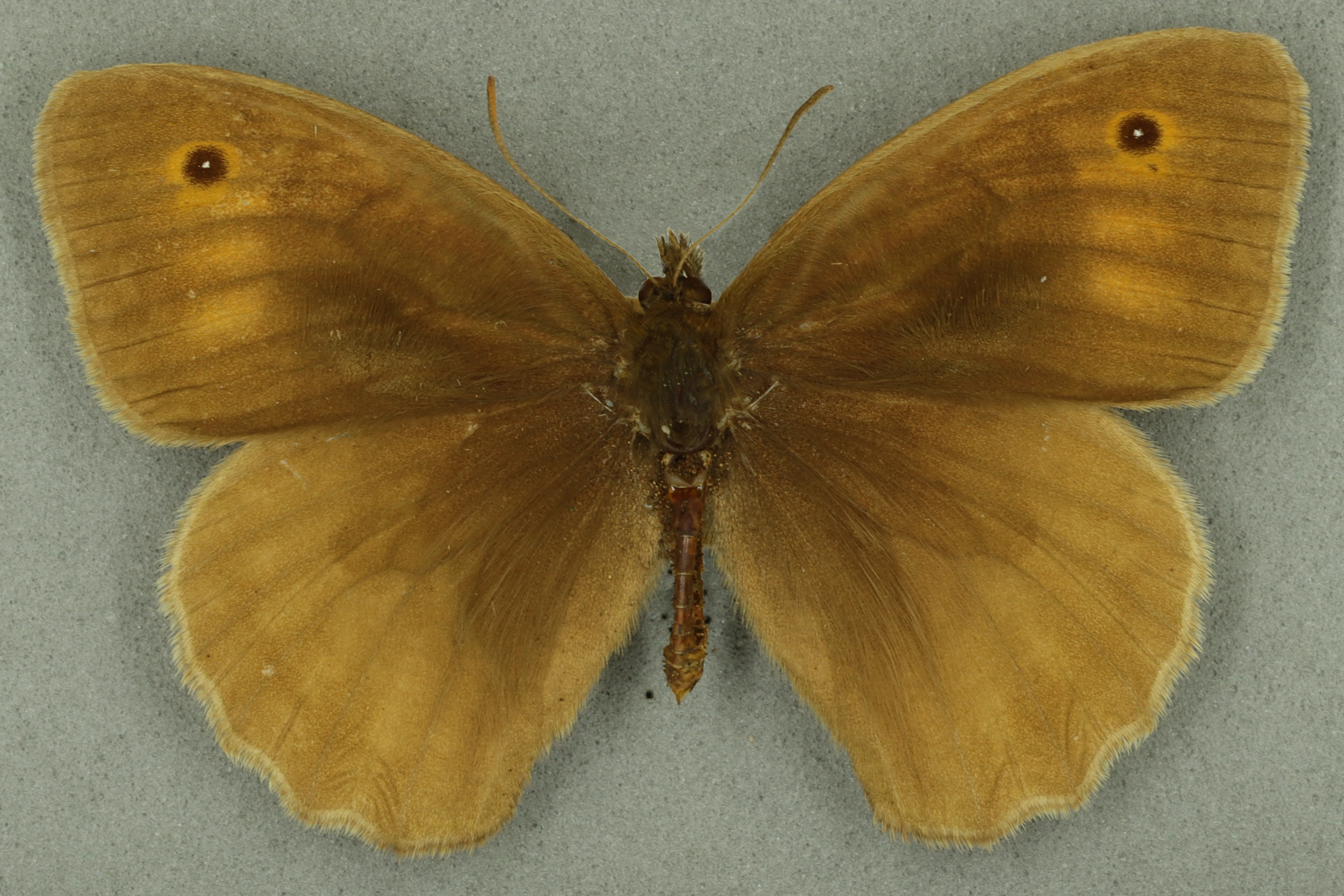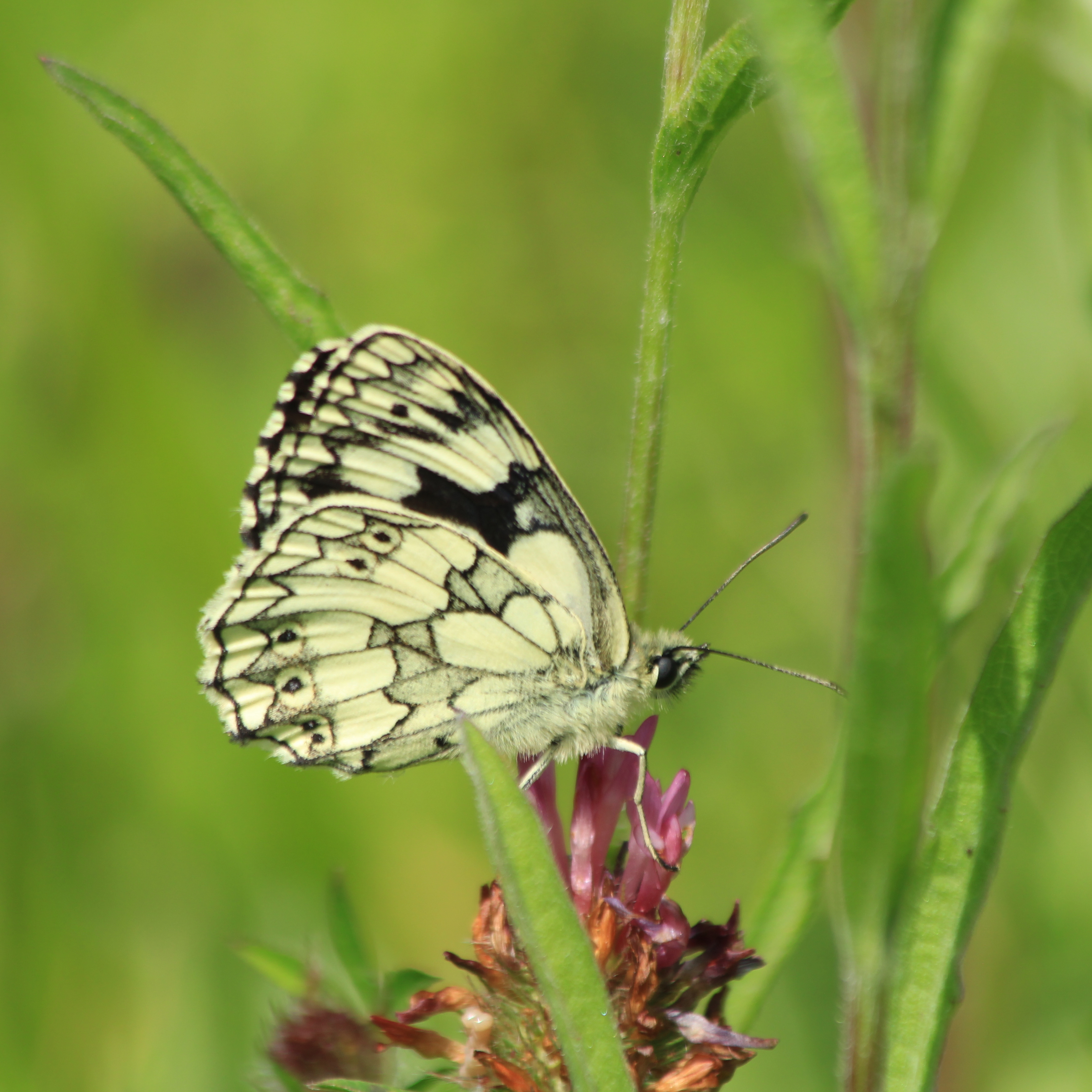Matt Hayes, Research Assistant writes:

Whilst everyone is being asked to stay at home it’s important that we continue to look outside and engage with the natural world. To help with this, we are going to be blogging about wildlife you can see from your window or in your garden.
This set of posts will look at different groups of common butterflies as well as some historical species that have been lost or suffered declines. Read to the end for tips on how to support butterflies where you live.
Family Nymphalidae
Meadow brown, Maniola jurtina

University Museum of Zoology collection. Copyright University of Cambridge

University Museum of Zoology collection. Copyright University of Cambridge
This large brown butterfly is appropriately named, as it is commonly seen in meadows and grasslands across almost all of the UK and Ireland. It is less frequently seen in gardens but can occasionally visit if suitable habitat is nearby.
The UK population has declined due to intensification of agriculture and loss of unimproved grasslands. That being said, it still has the reputation of being the most common butterfly in the country, it is just that it doesn’t reach the dizzyingly high numbers that it did in the past.

Credit Ellie Bladon
Most individuals emerge in June, but they can also come out in May if it is a warm year, with adults on the wing until September or October. You are more likely to see the actively-flying males, as they patrol around in search of females hunkered down in the undergrowth. The two sexes look similar, but the females have more orange on their wings, which some males almost completely lack. The species lays eggs on a variety of different grasses and its caterpillars are less choosy than many other butterflies.
Speckled wood, Pararge aegeria

University Museum of Zoology collection. Copyright University of Cambridge
As its name suggests, this beautiful speckled species frequents woods and other shady locations, as long as there is still dappled sunlight through the canopy. The speckled wood is found throughout Ireland, Wales and England and can be a common sight in gardens, if you have large hedgerows, trees or a scrubby border.

Credit S Steele
Males will patrol around for females or find a small sunny patch, no more than a few metres in diameter, where they perch and wait for a female to fly through. The males defend their patches of sunlight from intruders, flying up to inspect any insect passing through. If they discover a female, they will pursue her and attempt to mate, but if they find another male, they initiate a spectacular aerial display to fend them off. The two insects can fly spiralling around one another for a few minutes, before the original occupant perches back in position.
The speckled wood can produce several overlapping generations a year, with peak months and emergence times varying, but adults can be seen on the wing from as early as March, continuing through to October. They lay their eggs on a wide variety of grasses, in sunny sheltered locations.
Marbled white, Melanargia galathea


Credit Andrew Bladon
Due to its colouration, it may seem strange to group the marbled white with the browns. However, it is more closely related to these butterflies than it is to the whites. One suggestion is that the striking contrasting colours of black and white help to signify that it is unpalatable to predators, and this by chance makes it look similar to the white butterflies of family Pieridae.
It is fairly common on dry grasslands across much of southern England but is scarce or absent across most of the rest of the UK and Ireland. The marbled white is a butterfly of high Summer, usually emerging from June – August. It is less likely to be seen in gardens but can sometimes visit if suitable grasslands are nearby, where its caterpillars will feed on a variety of wild grasses, particularly red fescue.
Ringlet, Aphantopus hyperantus

University Museum of Zoology collection. Copyright University of Cambridge
The ringlet frequents damp grasslands and woodland edges across lowland areas of Ireland, Wales and southern England and is common where is does occur. It can occasionally travel from these sites to be seen in neighbouring gardens. In flight it can appear similar to the male meadow brown, but the ringlet has a darker colour, almost appearing black in some lights, with thin white wing margins. Their undersides have distinctive white eyespots, which are the ‘ringlets’ that give them their name. The species emerges in summer, from June – August, and lays eggs on a variety of grasses, with cock’s-foot and false brome being favourites.
Gatekeeper, Pyronia tithonus


This species requires warm, sheltered grassland habitats and is commonly seen along hedgerows and grassy lanes surrounded by scrub. As the name suggests, these types of habitat often have a gate nearby, making the butterfly a common visitor of these structures.

Credit Andrew Bladon
It is less likely to be seen in gardens than some of the other species mentioned in this list but, if sheltered grasslands exist nearby, you may get lucky. It is found throughout much of England and Wales and is also expanding north into Scotland as temperatures rise. In Ireland, the species is currently confined to the south coast.
The species can be confused with the larger meadow brown, but both sexes of the gatekeeper have more orange on their upper wings. The males also have large brown sex brands on their forewings, containing special scent scales used during courtship. The male will draw the female’s antennae over them in an attempt to entice her to mate. This summer-flying species usually starts to emerge at the end of June and can be seen until the start of September. It lays eggs on a variety of wild grasses.
Species of the Past
Wall, Lasiommata megera

This species is still widely distributed across dry coastal grasslands in Ireland, England and Wales, but it has suffered severe declines in recent years. If you were to look out of your window 40 years ago it would have been far more common across inland regions of the British Isles, including gardens.
The exact cause of the decline is not well understood, but populations have historically always fluctuated, and it is hoped that the species will bounce back. If you do see this butterfly it will often be in the process of sunning itself, warming up on exposed stones or walls, giving rise to its name. It can look a bit similar to a gatekeeper, due to its orange colouration, but the wall is much more heavily patterned and has brown interspersed throughout its wings.
The wall usually has two broods a year but can sometimes have a third. These emerge from April – June, July – September and September – October respectively. They lay their eggs on a wide variety of exposed dry grasses.
Gardening for ‘browns’
Larval foodplants:

Many of these species are more likely to breed in grassy meadows or the fringes of woodland rides. However, you can provide some support for them by avoiding the lawn mower and allowing an area of grass in your garden to grow up tall.
You could then seed in a range of wild grasses, which the browns use as their caterpillar foodplants. Growing a combination of cock’s- foot, false brome, bents and fescues will provide foodplants for all of the browns mentioned above. The specific addition of red fescue may be important for attracting marbled whites.
For more detailed information on gardening for butterflies and wildlife in general please see:
Butterfly Conservation (website)
The Wildlife Trust for Bedfordshire, Cambridgeshire and Northamptonshire (website)
For more detailed information on the butterflies of the British Isles please see:
Butterfly Conservation (website)
The Butterflies of Britain and Ireland (Book):
Lewington, R & Thomas, J (2014). The Butterflies of Britain & Ireland. New Revised Edition. Oxford: British Wildlife Publishing Ltd.

The Esmée Fairbairn Collections Fund is run by the Museums Association, funding projects that develop collections to achieve social impact.






2 thoughts on “The ‘browns’: not so drab butterflies”